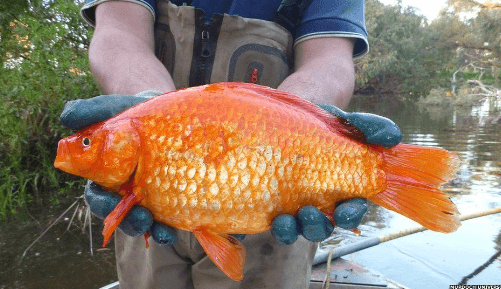Goldfish are one of the most common types of household pets, cherished for their vibrant colors and graceful swimming. But a question many might have asked at some point is: are goldfish edible for humans? In this article, we explore the topic in great detail, breaking down everything from the nutritional value to the ethical considerations, while answering the age-old question of whether these ornamental fish should be consumed.
Read More Custom Embroidery vs. Screen Printing: Which is Right for Your T-Shirts?
What is a Goldfish?
Goldfish (Carassius auratus) are a species of freshwater fish that belong to the carp family. They have been domesticated and bred for centuries, originating in East Asia. Though they are primarily kept as ornamental pets, they have a lot in common with fish that are consumed by humans, such as carp. However, just because they share these characteristics, does that mean they are safe or suitable for human consumption?
Are Goldfish Safe to Eat?
Goldfish, like other freshwater fish, are technically edible. However, there are several important considerations to weigh before deciding whether goldfish should make it onto your dinner plate.
Health Risks Associated with Eating Goldfish
The first major consideration is the potential health risks. Most goldfish are kept in home aquariums or outdoor ponds, where they are exposed to various chemicals and substances not intended for human consumption. The fish may have absorbed toxins from tap water treatments, aquarium medications, or even the plastic materials found in their tanks.
Moreover, goldfish are often kept in environments that are not sanitary enough for consumption, making them more likely to harbor bacteria and parasites. Consuming improperly prepared fish can result in foodborne illnesses, such as Salmonella or E. coli infections.
The Taste Factor
While it may be possible to eat a goldfish, the next question is: Would you want to?
Goldfish are bottom feeders, meaning they scavenge for food at the bottom of their environment. This diet often consists of plant material, algae, and small invertebrates, which can impart a muddy or bitter taste to the fish. Unlike fish specifically bred and prepared for culinary purposes, goldfish do not have the same flavor profile that might make them a desirable dish.
Nutritional Value of Goldfish
If you’re considering eating goldfish from a nutritional standpoint, their content is similar to other freshwater fish. They provide a good source of protein and essential omega-3 fatty acids, but their size and taste make them less ideal for a meal.
Protein and Fat Content
Goldfish, like most fish, are rich in lean protein. However, their small size means they provide minimal meat per fish. A single goldfish would not be enough to make a filling meal, and the energy output from trying to prepare one may outweigh its nutritional benefits.
Vitamins and Minerals
Goldfish contain essential vitamins such as Vitamin D and Vitamin B12, which contribute to bone health and energy production. They also provide a source of minerals like phosphorus and selenium. However, these nutrients are found in much higher concentrations in larger, more commonly consumed species of fish.
Read More Find Your Fashion Fix: Discover the Latest Women’s Online Shopping Websites
Ethical and Legal Considerations
Even if Are Goldfish Edible for Humans technically edible, eating them may raise both ethical and legal questions.
Ethical Concerns
Goldfish have been bred and domesticated primarily as pets, not for food. This raises an ethical debate about whether it’s appropriate to eat an animal that has been kept as a companion. Much like the societal stigma surrounding the consumption of cats or dogs in many cultures, eating goldfish might be considered morally questionable.
Legal Restrictions
In some places, there may be legal regulations concerning the consumption of pet animals. While laws surrounding goldfish specifically are rare, it’s essential to be aware of any local regulations regarding pet welfare and treatment. Selling or slaughtering pets for human consumption could potentially violate animal cruelty laws.
Read More Exploring the Dazzling Variety of Moissanite Jewelry
How to Prepare Goldfish for Consumption (If You Must)
If you are determined to eat goldfish, there are some important steps to follow to reduce the risks. Keep in mind, this is not an endorsement, but a guide to staying safe should you choose this unusual route.
Purging the Fish
Before consuming any goldfish, it’s essential to purge the fish for several days. This involves keeping the fish in clean, filtered water and feeding it a clean diet to remove any toxins it may have absorbed from its environment. During this period, avoid feeding the goldfish any food containing artificial additives.
Proper Cooking Methods
Cooking goldfish thoroughly is crucial to eliminate any parasites or bacteria. Ensure the fish is cooked to an internal temperature of at least 145°F (63°C). Frying, grilling, or baking are the most effective methods to ensure the fish is safe to eat.
Alternatives to Eating Goldfish
If you’re still curious about eating carp-like fish, there are far better alternatives to goldfish that are specifically bred and farmed for human consumption. These include species such as:
- Common carp (Cyprinus carpio)
- Tilapia
- Catfish
These fish are raised in regulated environments and provide a far superior eating experience in terms of taste, nutrition, and safety.
Read More Southern Flair a Fashion And Personal Style Blog
Conclusion
In conclusion, while goldfish are technically edible, consuming them is neither advisable nor practical. The potential health risks, ethical concerns, and legal implications make them an unsuitable option for human consumption. Instead, it is better to choose fish that are farmed and prepared for the dining table.
If you’re still curious about consuming freshwater fish, consider more appropriate options like carp or tilapia, which offer a far safer and tastier alternative. Are Goldfish Edible for Humans, in the end, are better suited as ornamental pets than as part of your next meal.





 MicroStrategy Agency Now Holding 152,800 Bitcoins and Planning to Purchase More Block Crypto
MicroStrategy Agency Now Holding 152,800 Bitcoins and Planning to Purchase More Block Crypto